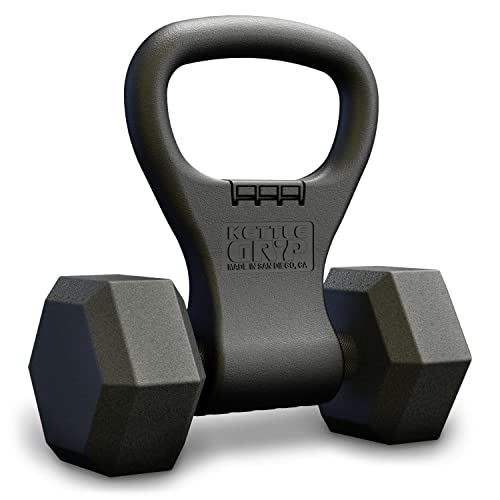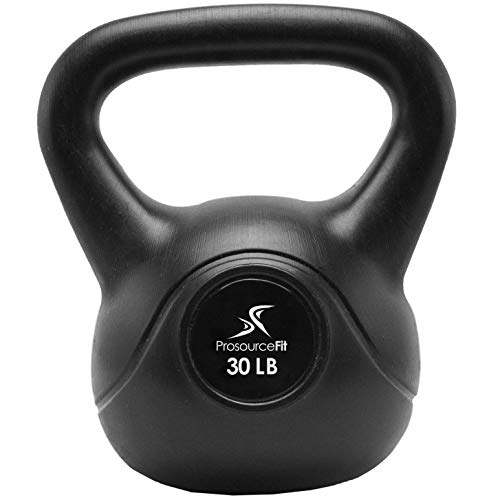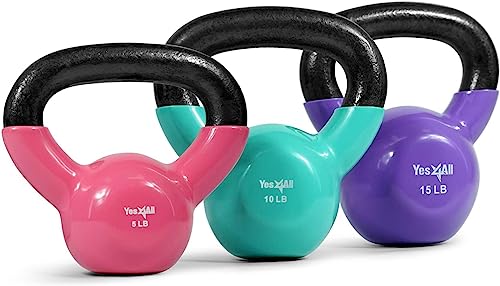Striving for the zenith of athletic prowess requires a harmonious blend of both physical might and mental acuity. Rooted in athletic training, the journey towards peak performance isn’t just about the sweat spilt on training grounds—it’s a mental marathon that takes place in the confines of one’s mind. Sports performance isn’t an end product but a perpetual cycle of growth, optimization, and adaptation. The multidisciplinary field of sports medicine plays a substantial role in this quest, offering insights and interventions that significantly advance athletic development and holistic health.
In the high-stakes realm of competitive sports, achieving peak performance transcends mere physical conditioning. It’s an intricate tapestry, weaving together the resilience of the mind and the strength of the body. Athletes and coaches alike must navigate through a labyrinth of challenges, from honing mental toughness to perfecting strategic plays. As the two paths of psychological fortitude and physical training intersect, the athlete is prepared to tackle the rigors of competition with the poise of a seasoned warrior.
Key Takeaways
- Athletic training is essential for the pursuit of peak sports performance.
- Mental toughness and sports psychology are pivotal in athletic development.
- Sports medicine offers valuable support for optimal physical health and performance.
- Resilience, concentration, and consistency are key traits for success under pressure.
- Effective coaching is rooted in strong communication and advanced training methodologies.
Aligning Body and Mind for Athletic Success
Athletic achievements are not solely the result of physical training; they require a harmonious synergy between the mind and body, a concept deeply rooted in the mind/body/performance connection. Grasping this intricate relationship empowers athletes to push beyond their limits and enables them to handle the psychological demands of rigorous training and competition.
Understanding the Mind/Body/Performance Connection
The concept of the mind/body/performance connection is fundamental to enhancing athlete performance. It’s the principle that an athlete’s psychological state can have profound effects on their physical capabilities and vice versa. Identifying and harnessing this connection is key to achieving peak performance levels in any sport. It ensures that an athlete’s training regimen is not just physically demanding but also mentally stimulating.
Addressing the physiological markers of stress and nervous system responses through focused mental conditioning strategies such as visualization, deep breathing, and mindfulness, athletes can significantly improve their performance under pressure. These techniques allow for a united approach between mind and body that leads to improved outcomes both during training and competition.
Mental toughness and communication skills work hand-in-hand to establish a resilient mindset that thrives in the competitive arena.
Developing Mental Toughness and Confidence
To reach the zenith of their potential, athletes must sharpen their mental toughness, a quality that allows them to overcome challenges and rebound from setbacks. Cultivating confidence is equally crucial; it fuels the determination to succeed and is often the determining factor in high-pressure scenarios. Training programs must therefore encompass techniques for mental fortification alongside physical preparation.
Interpersonal skills, such as effective communication with coaches and teammates, further empower athletes by creating a supportive environment conducive to growth. Mental resilience combined with physical mastery forms the bedrock of top-tier athlete performance, no matter the arena.
In summary, achieving peak performance in sports is dependent on a well-rounded approach that regards mental preparedness as equally important as physical conditioning. Only when the mind and body operate in concert can an athlete truly excel.
For a succinct overview of strategies employed to enhance the mind/body/performance synergy during training and competition, consider the table below:
| Strategy | Benefit to Mind | Benefit to Body |
|---|---|---|
| Visualization Techniques | Improves focus and mental clarity | Enhances muscle memory and preparation |
| Deep Breathing Exercises | Reduces anxiety and stress | Increases oxygen flow, aiding physical performance |
| Mindfulness and Meditation | Boosts concentration and present-moment awareness | Promotes recovery and stress relief |
| Progressive Muscle Relaxation | Encourages mental release of tension | Alleviates physical strain and promotes relaxation |
Essential Training Components for Peak Athletic Performance
In the realm of high-level sports competition, the foundation of an athlete’s success is built on several key pillars that form the Essential Training Components for Peak Athletic Performance. Meticulously designed athletic programs are based on the integration of sports medicine, strength and conditioning, and mindful attention to the risk of injury. These programs are continually informed by the science of human kinetics, fundamentally aimed at enhancing the full spectrum of an athlete’s capabilities.

Contemporary athletic training methodologies emphasize a comprehensive approach, focusing on more than just physical strength or endurance. They incorporate innovative sports medicine strategies and physical therapy techniques to ensure athletes are well-equipped to handle the pressures of competitive sports, effectively reducing the occurrence of sports injuries.
| Training Component | Objective | Relevance to Performance |
|---|---|---|
| Stamina | To increase endurance levels for prolonged athletic performance. | Crucial for late-stage competition when fatigue sets in. |
| Strength | Enhancing muscular power and force production capability. | Enables explosive movements and resistance to physical challenges. |
| Flexibility | Improving range of motion and muscle elasticity. | Reduces risk of injury and contributes to fluidity of motion. |
| Agility | Increasing the ability to change direction swiftly. | Essential for sports requiring quick transitions and evasion tactics. |
| Speed | To develop faster movement both in terms of reaction and action. | Critical for outpacing opponents and creating opportunities in play. |
| Skill | Honing sport-specific techniques and coordination. | Allows for precise and effective execution of sport-related tasks. |
Each component is interrelated, addressing various aspects of physical performance and health. Sports injuries, a prime concern for athletes, are best managed by proactive measures within training, integrating the expertise of sports medicine professionals and physical therapists into the athletic regimen. As athletes progress through an athletic program, they engage not only with the physical exercises but also with forward-thinking strategies that anticipate the physiological stresses of their sport.
Ultimately, the role of such comprehensive training is to create resilient athletes who can perform at their peak while buffering against the risk of injury. By balancing the development of strength, speed, flexibility, and skill with a strong support system of medical and conditioning knowledge, the stage is set for athletic excellence, longevity in sport, and the continuous pushing of human performance boundaries.
Designing Effective Training Programs
Embarking on the creation of highly effective and responsive training programs necessitates a methodical approach grounded in sports science. By understanding the critical elements that contribute to athletic excellence, trainers can craft regimens that not only mitigate the potential for athletic-related injuries but also enhance performance through specificity and conditioning.
Principle of Specificity in Athletic Training
To align training programs with an athlete’s individual goals, the principle of specificity serves as a foundational pillar. This concept dictates that adaptations in the body are specific to the nature of the training stimuli. Therefore, workouts must closely resemble the demands of the sport or activity an athlete is preparing for, ensuring each session contributes meaningally to their skillset and performance capabilities.
Incorporating Strength and Conditioning for Comprehensive Development
Integral to a robust training program is the inclusion of strength and conditioning exercises. Not only do these workouts enhance the overall muscle mass, bone density, and joint stability of the athlete, but they also play a significant role in the prevention of injuries. A well-rounded athlete is a formidable one, with greater resilience against the rigorous demands of their chosen sport.
- Targeted muscle groups to improve sports-specific movements
- Cardiovascular exercises for endurance enhancement
- Flexibility routines for improved range of motion and injury prevention
The integration of these various elements, in conjunction with a personalized coaching process, results in a comprehensive development of the athlete’s physical attributes. Let us explore a comparative overview of how specificity and general conditioning exercises cater to different athletic profiles:
| Sport | Specificity Focus | General Conditioning | Injury Prevention Focus |
|---|---|---|---|
| Track and Field | Sprint mechanics, power generation | Core stability, lower body strength | Hamstring flexibility, Achilles tendon care |
| Swimming | Stroke efficiency, aquatic agility | Upper body endurance, lung capacity | Shoulder joint mobility, rotator cuff strength |
| Basketball | Jump shot precision, agility drills | Explosive power, energy systems work | Ankle support, knee shock absorption |
Ultimately, each training initiative must be as unique as the athlete in question, fine-tuned to sport specifications, and backed by the latest sports science. These programs are imperative in crafting athletes who are not only strong and conditioned but also skilled tacticians in their athletic discipline.
Communication and Coaching: Enhancing the Training and Competition Experience
The interplay between communication skills and the coaching process is crucial for elevating sports performance. A coach’s adeptness at communicating is not merely about transferring knowledge, but also about inspiring athletes to unlock their full potential. Effective communication fosters an environment where player and coach interaction thrives, cementing a foundation of mutual respect and understanding.
Consider the impact of a well-conveyed strategy talk before a big game or the thoughtful exchange during a timeout—these moments are pivotal in shaping the outcome of an athlete’s performance. Athletic trainers who master the nuances of dialogue and listening can personalize their feedback to meet each player’s needs, driving home the importance of individual roles within the team structure in pursuit of collective goals.
High-quality communication predicates successful coaching by ensuring all team members are aligned with the team’s vision and goals.
Within the coaching process, a premium is placed on continuous education. It is paramount for coaches and trainers to stay ahead of the latest developments in sports performance to convey this knowledge effectively to their athletes. This creates a ripple effect, where athletes are encouraged to communicate their experiences and challenges, leading to a more tailored and impactful coaching process.
- Defining clear expectations for both coaches and athletes
- Establishing open channels for feedback from player to coach and vice versa
- Encouraging dialogue around performance and well-being
- Utilizing communication to fortify team dynamics and spirit
At the heart of player and coach interaction lies the skill of active listening. By actually hearing and responding to what athletes convey, rather than dictating every aspect of training and competition, coaches can optimize the effectiveness of their mentorship. This two-way street of dialogue cultivates a supportive network that extends beyond the playing field, into the realm of personal growth and development.

In summarizing, the essence of communication skills within sports cannot be understated. It is a powerful tool that when utilized effectively, bridges the gap between talent and performance, allowing players and coaches to work harmoniously towards their common goals. Thus, enhancing the overall sports performance and creating an atmosphere where champions are forged through words as well as actions.
Risk Management and Injury Prevention Strategies
The essence of peak sports performance lies not only in skillful play and rigorous training but also in the meticulous application of risk management and injury prevention strategies. These strategic approaches aim to protect athletes from the avoidable sports injuries that can occur both on and off the field.
Implementing Protective Measures and Equipment
To significantly reduce the risk of sport injury, the implementation of protective measures and the usage of athletic equipment must be a top priority for sports professionals. This includes gear that is specially designed to cushion impact, provide support, and enhance safety during athletic activities. Items such as helmets, padding, and proper footwear are non-negotiable elements of an athlete’s attire.
- Headgear in sports like football and hockey to prevent concussions
- Knee and elbow pads in skateboarding and BMX to deter abrasions
- High-quality athletic shoes for impact absorption in running and basketball
Ensuring Safety in Sports Facilities
Equally as vital as personal gear, the condition and safety of sports facilities play a crucial role in preventing injury. Regular inspections and maintenance of playing fields, courts, and gym equipment are imperative in avoiding potentially harmful accidents. Implementing non-slip surfaces, adequately spaced equipment, and ensuring the presence of safety nets where needed are part of an extensive checklist aimed at creating a secure environment for athletes.
| Facility Component | Considerations for Safety |
|---|---|
| Playing Surfaces | Regular checks for hazards like holes or uneven terrain |
| Sports Equipment | Assessment for wear and tear, proper securing of fixtures |
| Lighting and Visibility | Ensuring good visibility in indoor and outdoor facilities |
In summary, thorough measures in risk management and injury prevention, from protective gear to the maintenance of facilities, are foundational in supporting the longevity and success of athletes across all levels of sport. Not only do these methods protect the physical health of athletes, but they also preserve their ability to engage fully in the sports they love, without interruption.
Maximizing Athlete Development and Performance Benchmarks
The journey of an athlete is marked by continuous improvement and the meticulous setting of performance benchmarks. In the realm of competitive sports, goal setting and tracking progress are foundational elements that fuel the passion for excellence and the strategic pursuit of athletic milestones. To forge champions, a deep appreciation for the physiology of injury and knowledge of recovery techniques is necessary to prevent setbacks and ensure robust, enduring athlete development.
Goal Setting and Tracking Progress
Constructing pathways to success begins with the establishment of ambitious yet attainable goals. These objectives drive athletes forward, providing clear direction and motivation. As benchmarks are progressively achieved, tracking tools provide critical feedback, illuminating the areas that require further attention and sculpting the athlete’s trajectory towards peak performance.
- Short-term goals to foster quick wins and maintain motivation
- Long-term goals to visualize the ultimate objectives in athlete development
- Regular progress reviews to ensure alignment with performance benchmarks
Understanding the Physiology of Injury and Recovery
Injuries are an athlete’s adversary, threatening to impede progress and derail aspirations. By mastering the physiology behind injuries, coaches and athletes can devise personalized training routines that emphasize injury prevention. When injuries do occur, leveraging science-backed recovery techniques facilitates swift and effective rehabilitation, maintaining the athlete’s course towards their developmental peak.
| Injury Type | Preventative Measures | Recovery Techniques |
|---|---|---|
| Soft Tissue Injury | Proper warm-up routines, flexibility exercises | Rest, ice, compression, and elevation (RICE) |
| Bone Fractures | Strength training, calcium-rich diet | Immobilization, controlled physical therapy |
| Joint Injuries | Technique refinement, stability exercises | Anti-inflammatory medication, joint-specific rehab |
Fundamentals of Athletic Training for Peak Performance
The fundamentals of athletic training play a pivotal role in an athlete’s journey towards peak performance. Grasping the intricate balance of training stimuli not only furthers an athlete’s physical prowess but also acts as a cornerstone for the coaching process. By grounding athletic training in the pillars of sports science, athletes acquire the means to effectively enhance their talents while also mitigating the risk of athletic-related injuries. Well-designed training programs focus on the individual needs of the sport and the athlete, adhering to plans that are both strategic and adaptable.
Central to this approach is the understanding that each sport requires different training stimuli. The coaching process must therefore be meticulous in applying specific exercises that replicate the dynamic challenges an athlete will face in their sporting environment. Moreover, the integration of sports science principles into training programs equips athletes with a competitive edge, underpinned by evidence-based methodologies.

Athletic programs crafted with an eye for detail and a commitment to progression deliver the most effective results. Athletes, armed with a sturdy foundation in the fundamentals of training, can withstand rigorous competitions and elevate their performance levels. It’s through this rigorous dedication to the science and the art of athletic training that peak performance becomes not just a goal, but an attainable reality.
The Role of Nutrition and Supplements in Enhancing Athletic Performance
Unlocking the full potential of an athlete’s performance is intricately linked to their dietary regime and the incorporation of sport nutrition and nutritional supplements. Discipline in nutrition fuels the body for energy and aids critical recovery techniques post-exertion, creating a sustainable environment for athletes to thrive and meet the demands of rigorous sporting activities.
Sport Nutrition for Energy and Recovery
The emphasis on sport nutrition is pivotal in providing the necessary energy for peak sports performance. A balanced intake of macronutrients – proteins, carbohydrates, and fats, not only supplies the energy but also contributes to effective muscle repair and recovery. Adequate hydration and micronutrients, such as vitamins and minerals, further support an athlete’s physical condition and recovery process following extensive training or competition.
Addressing the Performance-Enhancing Drug Debate
Another vital segment of an athlete’s performance strategy includes the discussion around performance-enhancing drugs (PEDs). The controversy surrounding PEDs involves legality, health implications, and fairness in competition. Athletes and coaches must be informed and vigilant, endorsing natural supplements that comply with sports jurisdictions, avoid jeopardizing athletes’ health, and preserve the integrity of competitive sports.
| Nutrient Category | Benefits | Examples |
|---|---|---|
| Proteins | Muscle repair and growth | Whey protein, Casein, Plant-based proteins |
| Carbohydrates | Energy provision for activities | Whole grains, Fruits, Energy bars |
| Fats | Sustained energy, hormone function | Omega-3 fatty acids, Nuts, Seeds |
| Hydration | Maintenance of bodily functions | Water, Electrolyte drinks |
| Vitamins & Minerals | Overall wellness, Reducing inflammation | Multivitamins, Zinc, Iron supplements |
Ultimately, the strategic application of diet and supplement use is a cornerstone of any athlete’s regimen. It not only aims at enhancing performance but also focuses on maintaining long-term health and vitality, steering clear from the contentious sphere of performance-enhancing drugs.
Building a Foundation: From Local Fields to the World Series
The journey of an athlete from playground to podium is underpinned by the robust network of youth sports and community programs. These form the crux of athlete development, providing critical opportunities for engagement and growth. Beginning at the local level, these programs invite participation and nurture talent, instilling a love for sports that could very well shape the future of athletics.
Engaging Youth Sports and Community Programs
The engagement of young athletes in community-driven sports programs is pivotal for both their personal growth and the health of the wider sports ecosystem. Starting with sports camps and school-based leagues, the involvement in youth sports provides a practical framework for children to learn the importance of teamwork, discipline, and sportsmanship, which are invaluable life skills.

Role of Certified Athletic Trainers in Shaping Talent
Integral to nurturing budding talent are the certified athletic trainers, who are not just healers but also educators and mentors. They provide crucial support in sports medicine, ensuring that athletes are both physically and mentally prepared for the rigors of competition. Athletic trainers are frontline advocates for injury prevention and recovery, essential for sustaining an athlete’s career. Furthermore, they embody the potential careers in sports medicine that young athletes might aspire to.
| Youth Sports Impact | Role of Community Programs | Contribution of Athletic Trainers |
|---|---|---|
| Development of fundamental skills | Accessibility for diverse communities | Technical skill enhancement |
| Fostering teamwork and leadership | Social engagement and sense of belonging | Injury prevention and management |
| Encouragement of healthy competition | Resources for training and equipment | Career guidance in sports medicine |
The support system created by community programs and athletic trainers ensures that the aspirants of youth sports are well-equipped for their athletic journey. Encouraging an early start in sports and providing professional guidance create a sturdy foundation for those considering a career as a sports medicine professional. By investing in athlete development from the ground up, we pave the way for a healthier, more competitive, and more inclusive sports culture that could lead straight to the World Series.
Conclusion
As we arrive at the end of our exploration into the intricate realm of athletic prowess and resilience, the pathway forward for those aspiring to cultivate a sports medicine career is marked by an undying commitment to ongoing development. The field is not static; it breathes and evolves, constantly reshaping the contours of athletic training education. It requires an absorption of not just the foundational sciences but also an agility to adapt practices in light of sports science advancements.
Preparing for a Career in Sports Medicine and Athletic Training
The journey towards becoming a consummate practitioner in sports medicine is buttressed by a rigorous educational framework. This framework is complemented by extensive hands-on experiences, thereby equipping future professionals with the expertise to navigate the multifarious scenarios they will encounter. Knowledge acquisition is merely the first step; practical application and continued professional growth are crucial in ensuring excellence in patient and athlete management.
The Ongoing Development of Sports Science and Training Techniques
Moreover, the professional landscape is characterized by perennial training techniques innovation. This innovation is informed by empirical research and technological breakthroughs, requiring a keen eye for new knowledge and its potential application. Whether fortifying the prevention of athletic-related injuries or enhancing performance, the drive for innovation serves as the lifeblood for the sports medicine and athletic training vocations. Ultimately, a dedication to lifelong learning substantiates the essence of quality care and optimal athletic performance, ensuring that both the science and its subjects continually stride forward.





